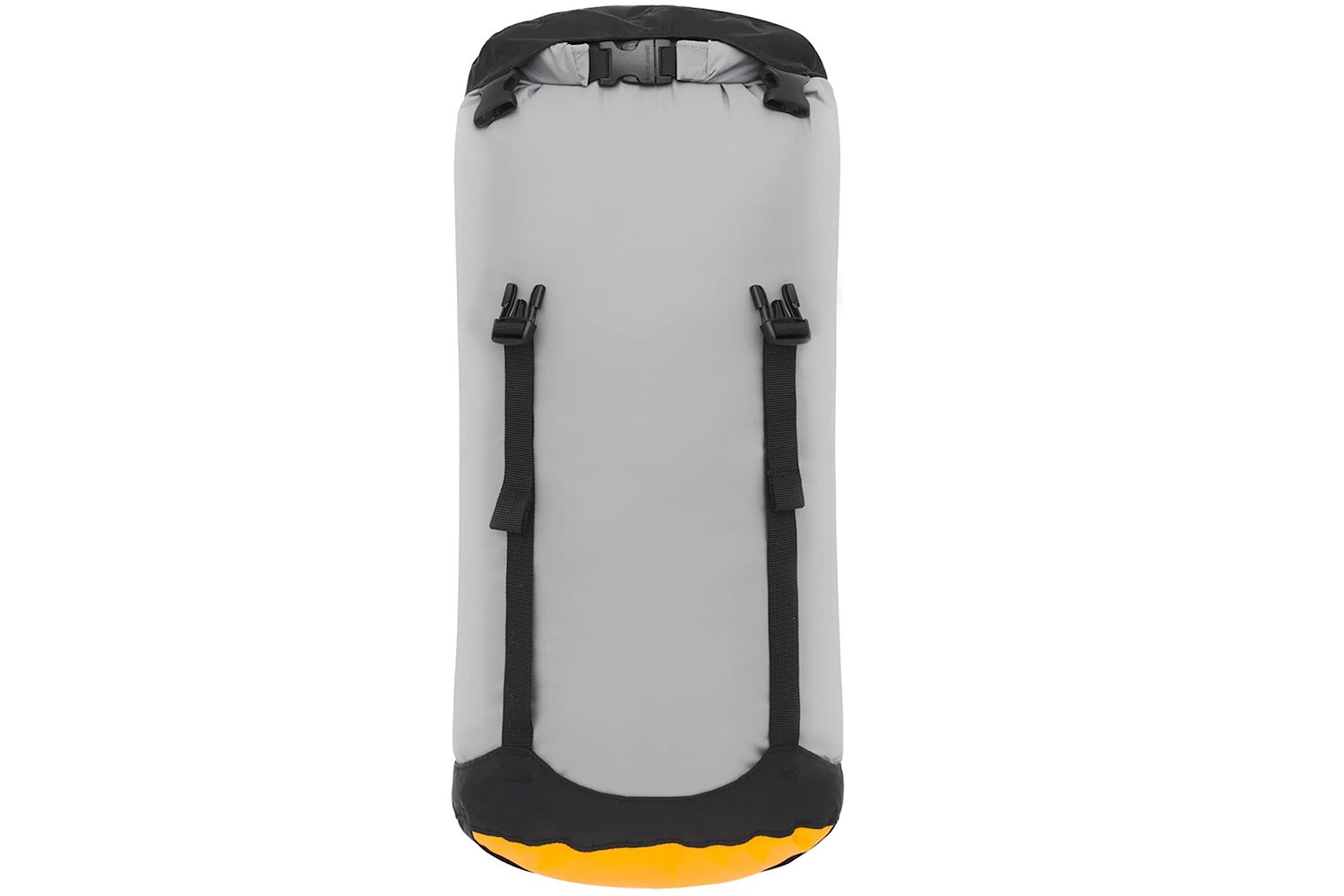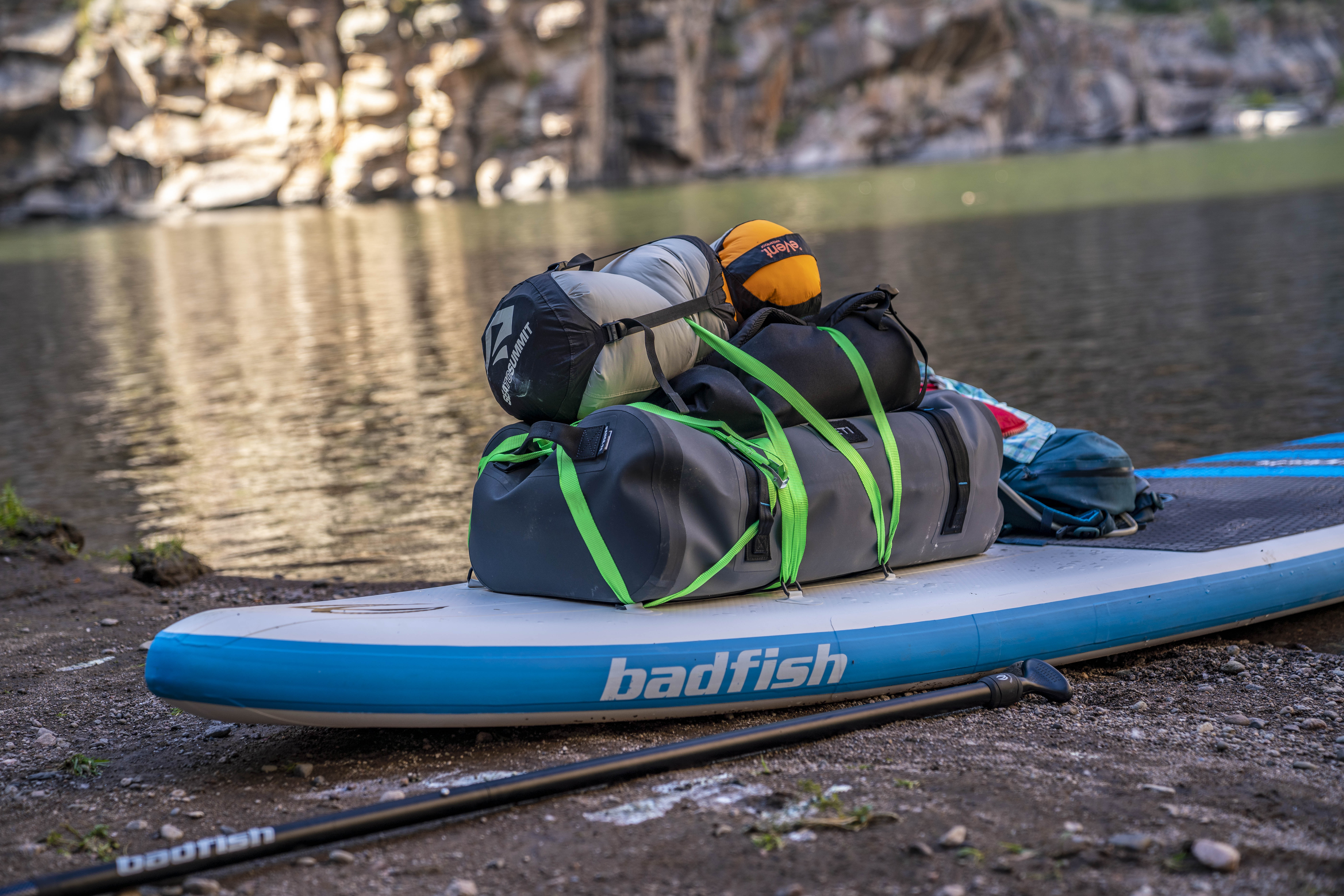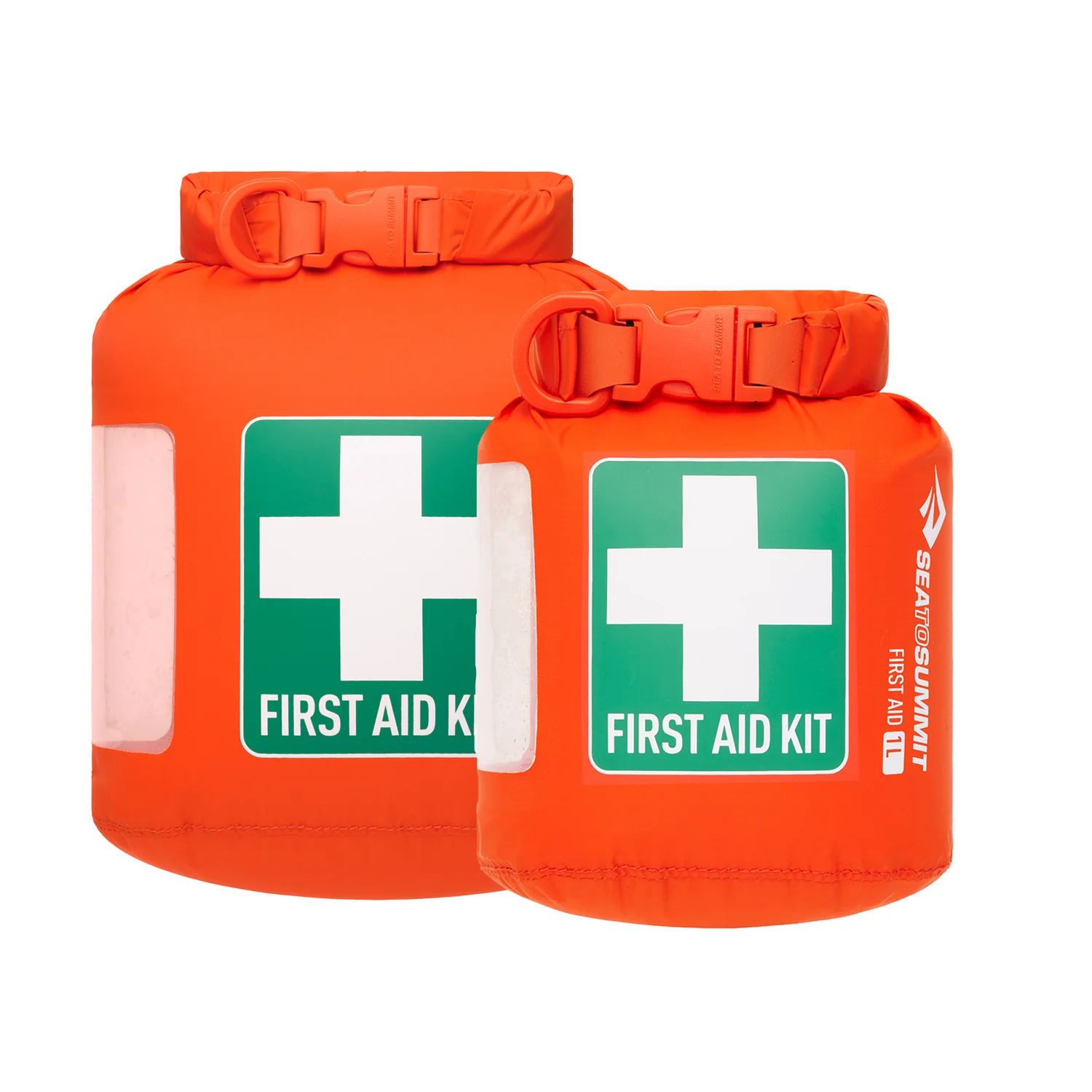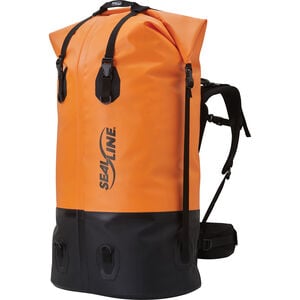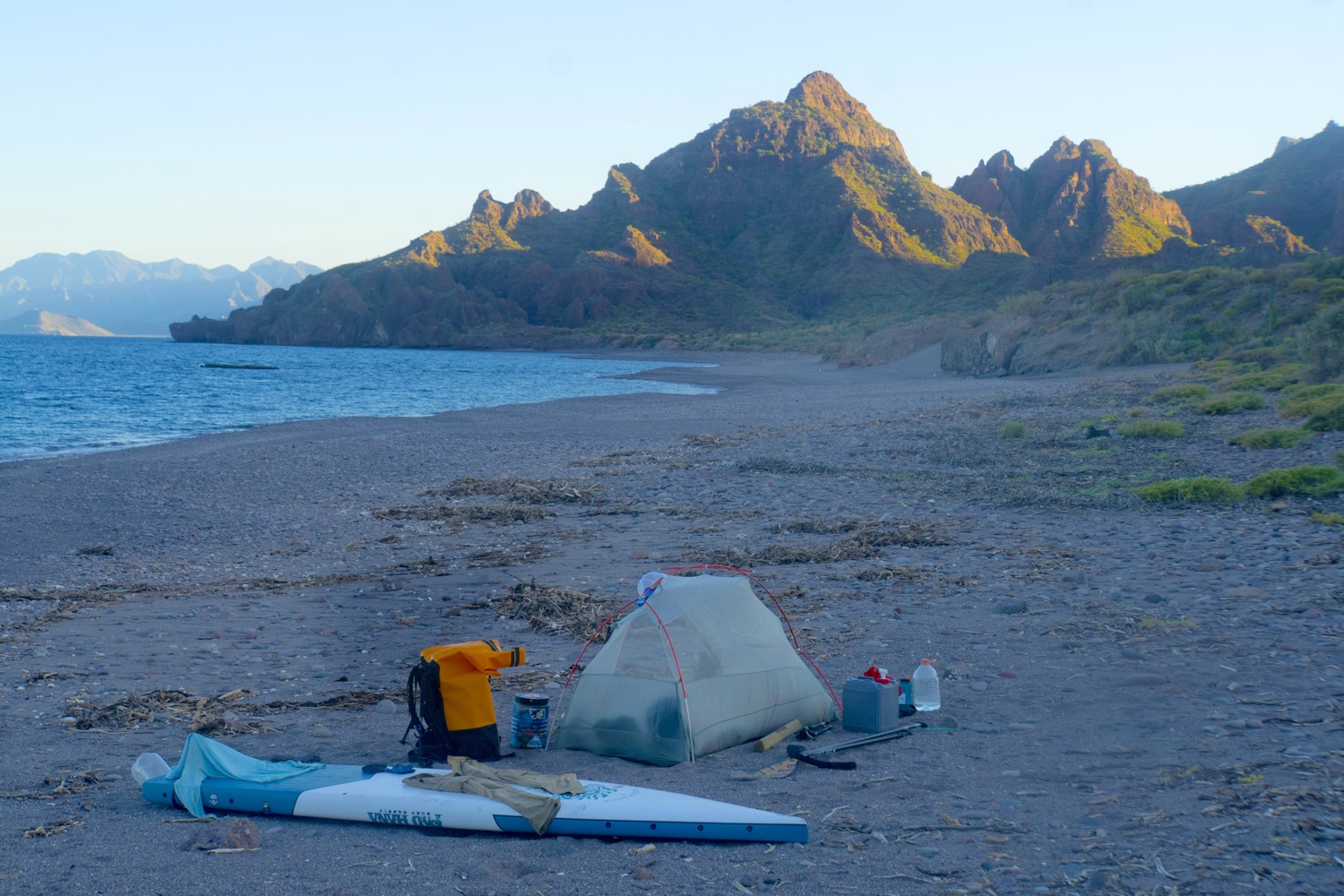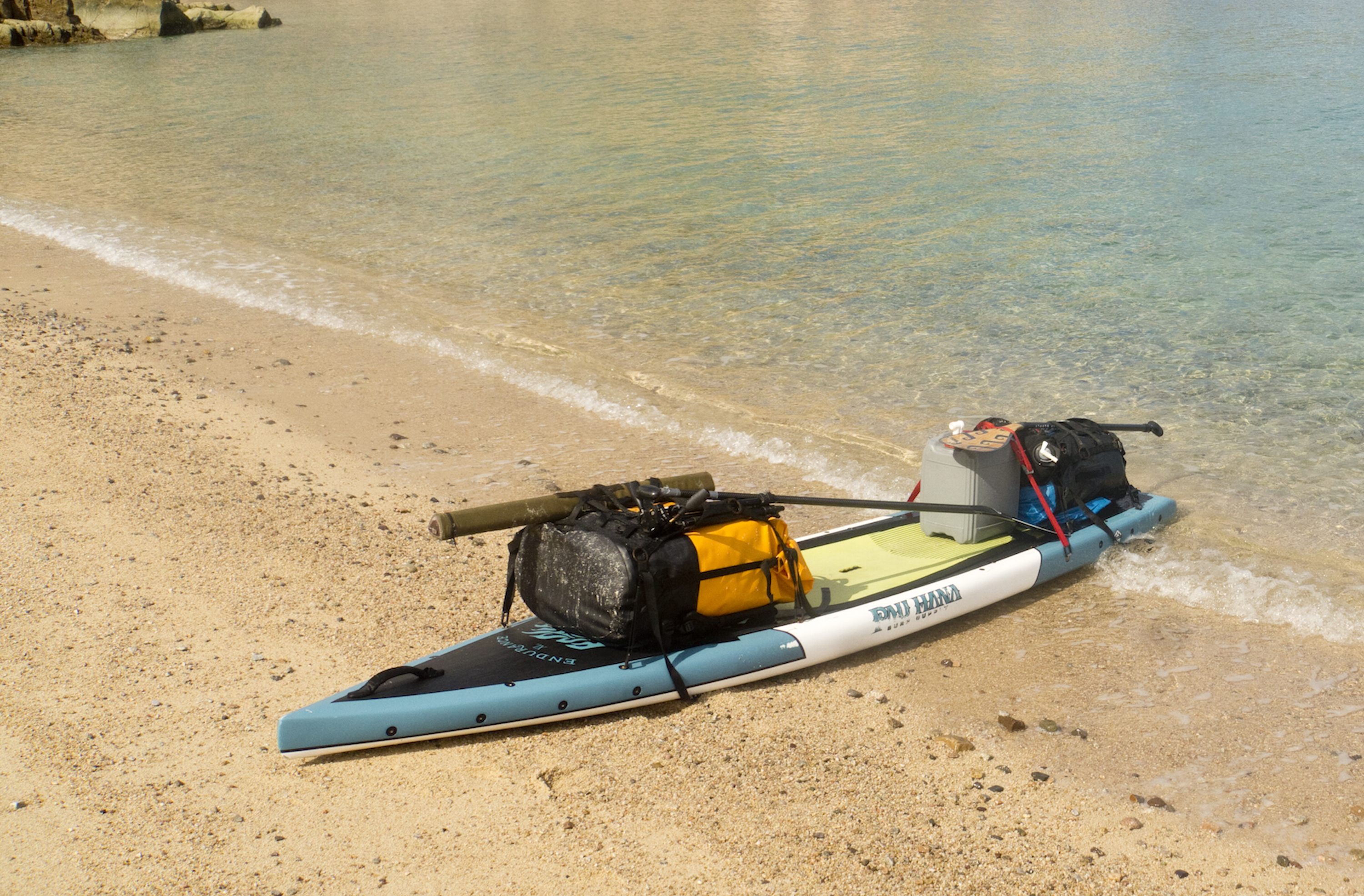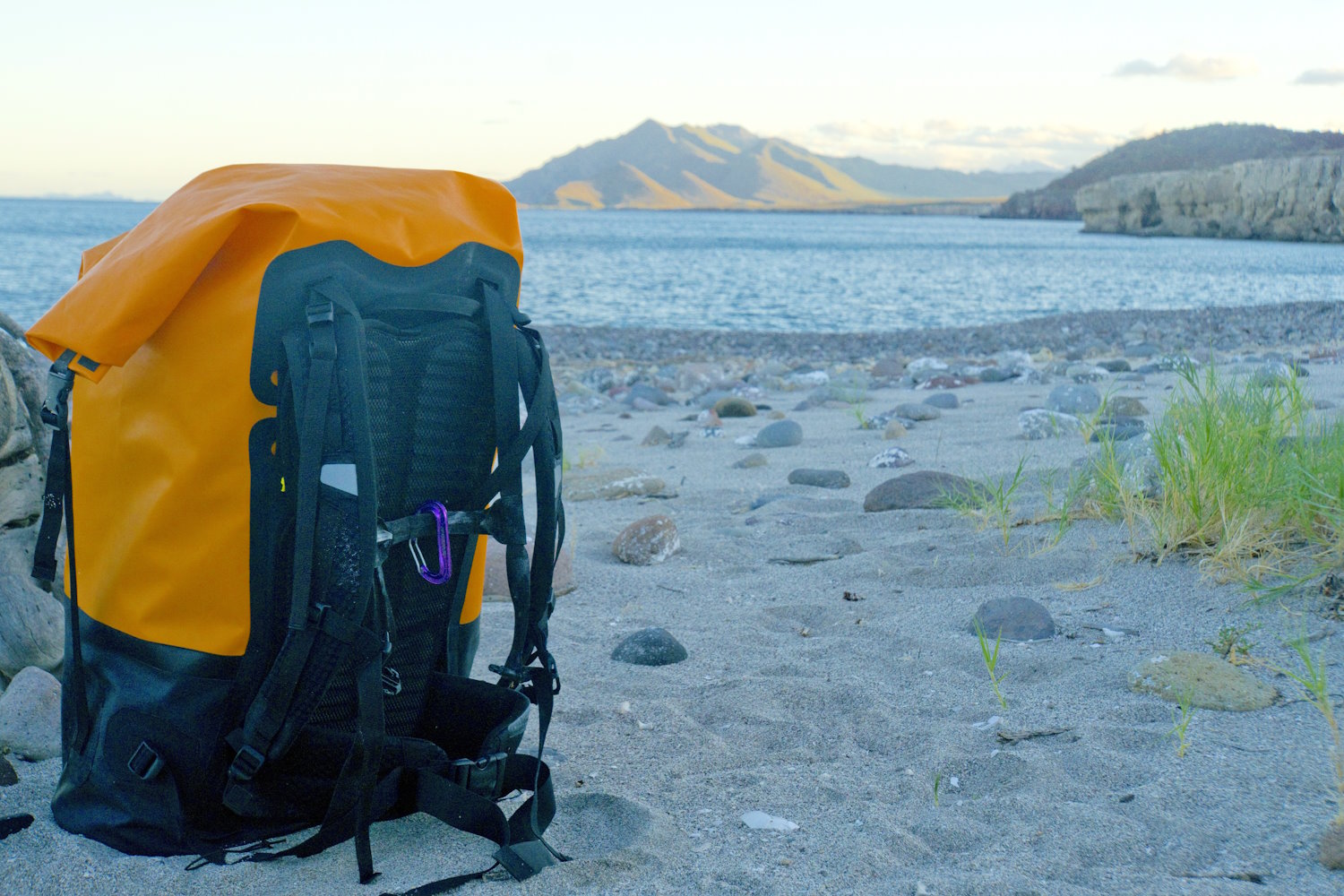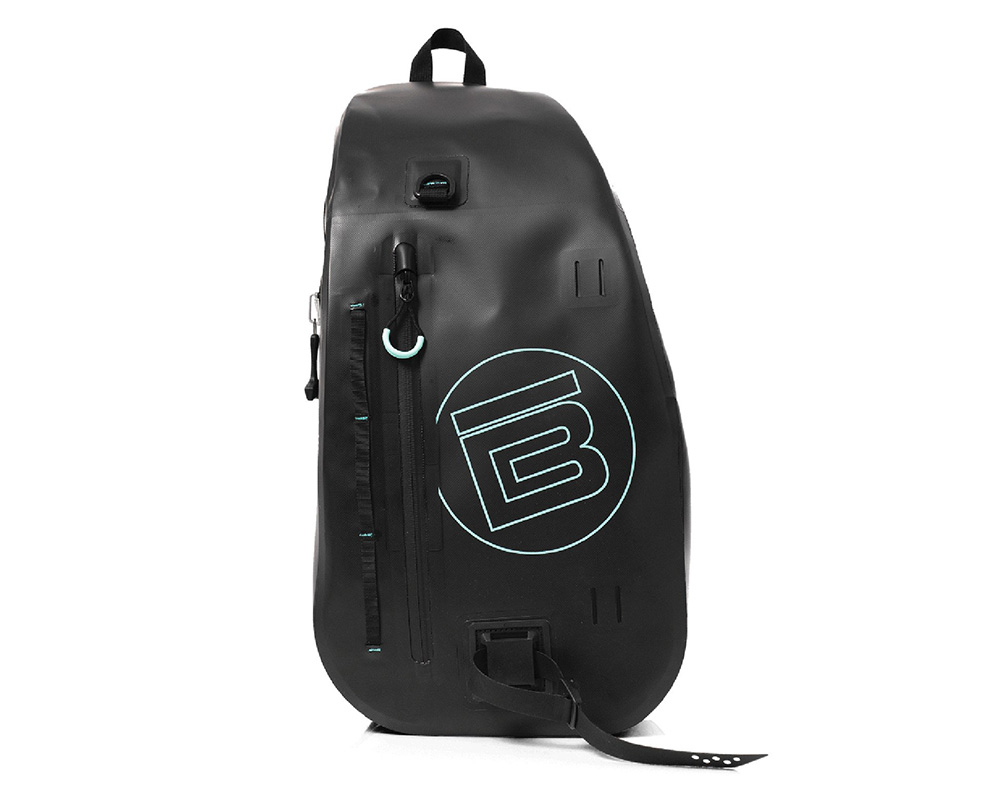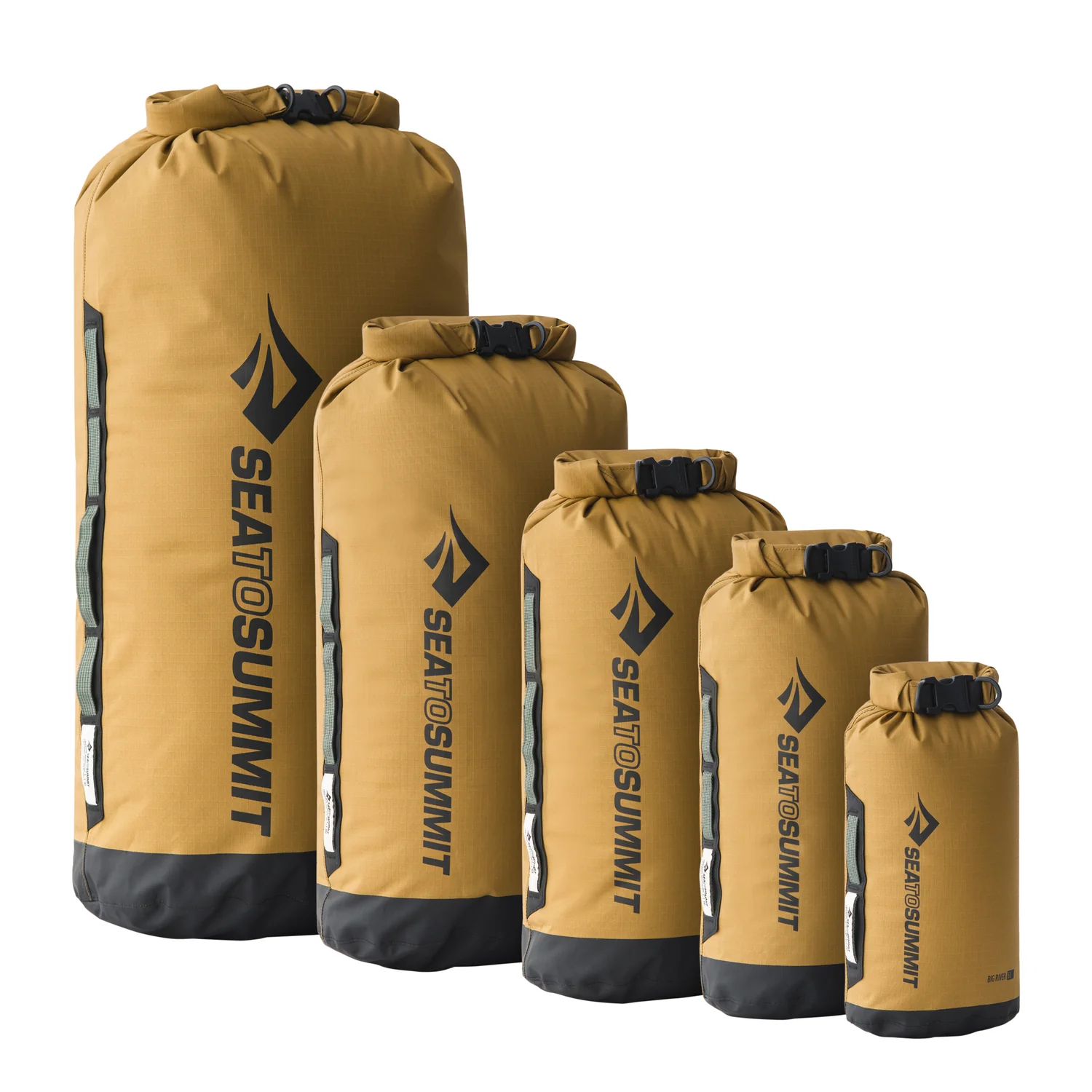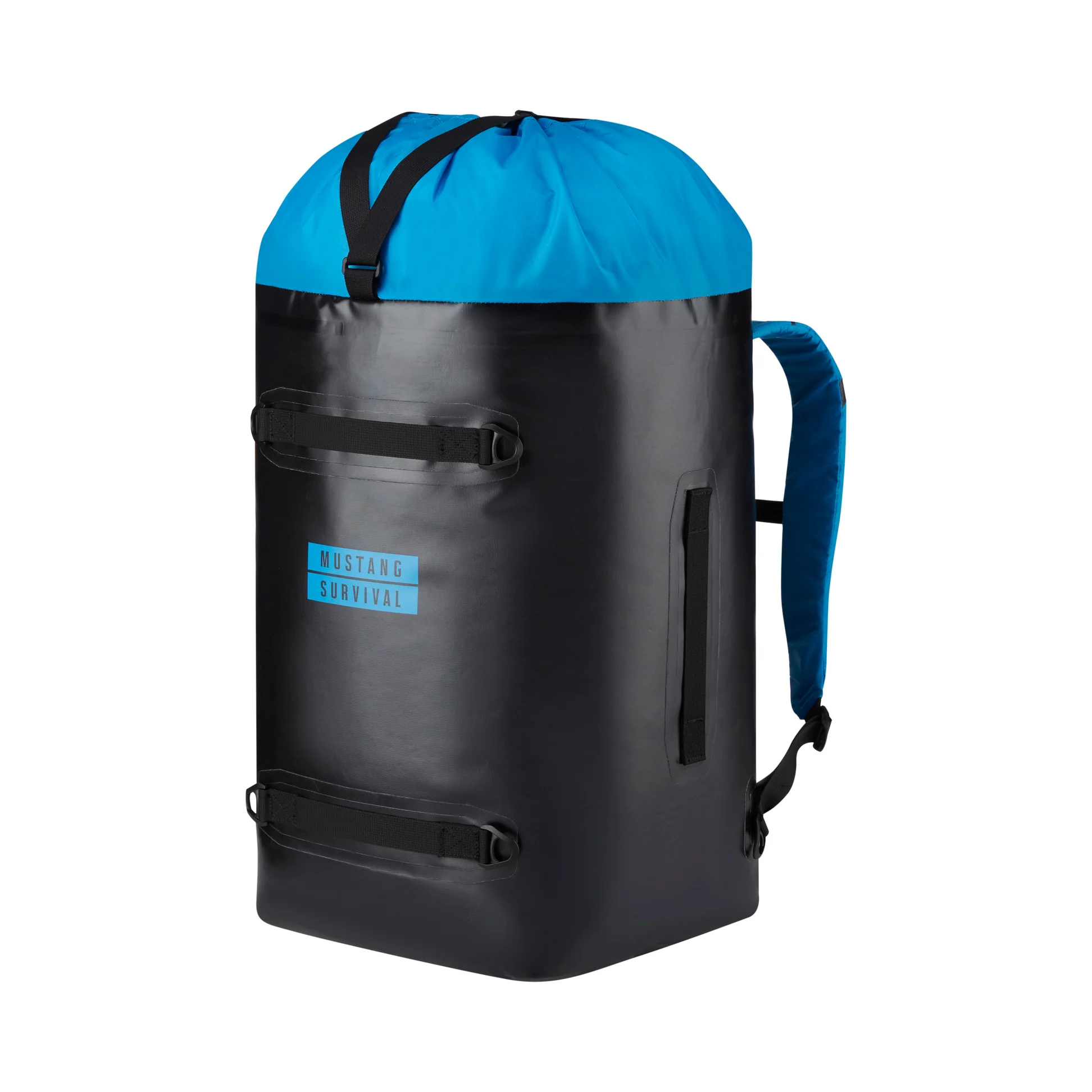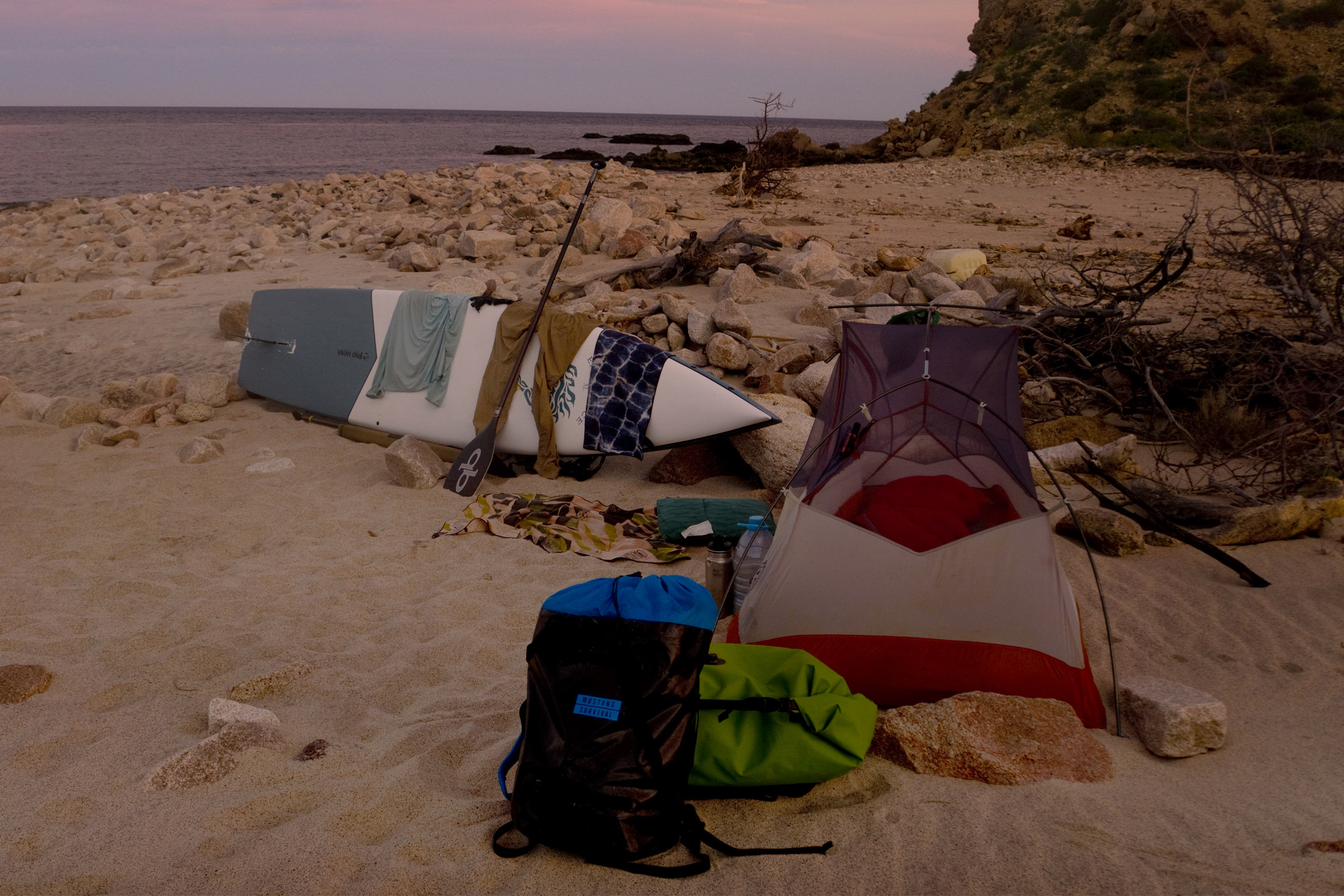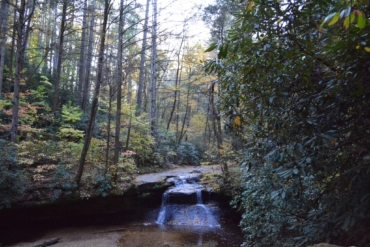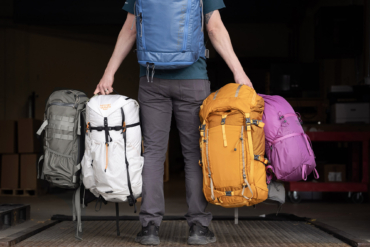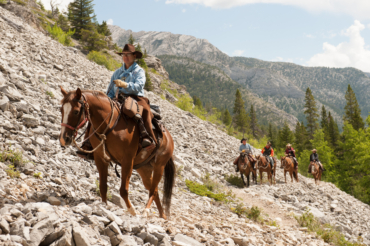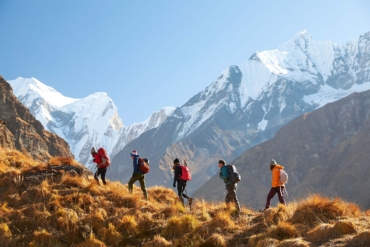Dry bags have a single goal — keeping your gear dry. Whether your raft gets flipped, you take a spill in a creek, or you get caught in an unexpected downpour, it’s essential that clothing, sleeping bags, electronics, and other necessities stay dry.
If your gear has ever been soaked in the wilderness, you know how difficult — or even life-threatening — it can be, taking a toll physically and mentally. We’ve been there, and it inspired our hunt for the best tool for the job.
Whether you’re backpacking, paddling through a gorge or down a coastline, hunting with a fourth-season elk tag, carrying emergency supplies, or linking up national parks by motorcycle, there are plenty of adventures where a dry bag is foundational.
Editor’s Note: We updated our Dry Bags buyer’s guide on May 12, 2025, with the BOTE Highwater Slingpack.
The Best Dry Bags of 2025
YETI Panga 75 Dry Duffel
- Material: High-density, puncture-resistant nylon shell with EVA-molded bottom
- Closure: HydroLok zipper
- Gear capacity (L) options: 50, 75, 100
- Dimensions: 28″ x 15.5″ x 11″ (75L)
- Weight: 2,767 g
- Features: 2 interior mesh pockets, removable shoulder straps, multiple lash points
- Best use: Multiday paddle trips, road trips with open-bed truck
Pros
- Extremely durable
- Excellent, ergonomic, burly waterproof zipper
- Ample space for carrying apparel and gear
Cons
- Higher investment
- Too large for some objectives
- Not easily foldable for storage
NRS Bill’s Bag Dry Bag 65L
- Material: Durable PVC and polyester
- Closure: Waterproof roll-top closure with magnetic StormStrip seal
- Gear capacity (L) options: 65, 110
- Dimensions: 14″ x 24″ (65L)
- Weight: 1,899 g
- Features: Removable, adjustable shoulder strap harness with a chest clip
- Best use: Multiday and single-day paddle trips
Pros
- Padded shoulder straps
- Lower price point
Cons
- Not as robust as other higher-priced dry bags
- Top-loading means you’ll need to dig to the bottom to find items
- Some users noted the StormStrip closure seal was not very durable
Sea to Summit 13L Evac Compression Dry Bag
- Material: PU-coated, bluesign-approved, recycled 70-denier nylon and eVent laminate base
- Closure: Roll-top with wrap-around compression straps
- Gear capacity (L) options: 5, 8, 13, 20, 35
- Dimensions: 8.7″ x 17.6″
- Weight: 136 g
- Features: Compression straps!
- Best use: Backpacking, bikepacking, hiking
Pros
- Helps to pack down space-consuming apparel and gear
- Four pull straps make the compression process easy
- Very lightweight
Cons
- Exterior material is not the most robust we tested
- Not a bag we’d trust for full submersion
Sea to Summit Lightweight Dry Bag First Aid
- Material: 70-denier waterproof fabric with a PFC-free DWR coat
- Closure: Roll-top with 5/8″ buckle
- Gear capacity (L) options: 1, 3
- Dimensions: 6.7 x 5.2 x 8.4 in (3L)
- Weight: 47 g
- Features: First-Aid Kit label and bright red color, D-ring attachment point at buckle, designed to be compatible with a 5/8″ Field Repair Buckle that can easily replace a broken buckle (with a Phillips head screwdriver)
- Best use: Backpacking, bikepacking, hiking, skiing, paddling, hunting
Pros
- Universal first aid kit symbol and bright red color for quick identification
- Clear TPU window to see inside bag
- Very lightweight
Cons
- The TPU window could be larger
- D-ring could be a bit larger
SealLine Pro Dry Pack 120L
- Material: 600-denier polyurethane-coated polyester base, 400-denier polyurethane-coated nylon sides
- Closure: Roll-top with four buckles
- Gear capacity (L) options: 70, 120
- Dimensions: 18.5” x 12.5” x 32” (120L)
- Weight: 88 oz.
- Features: Bathtub bottom reinforcement
- Best use: Standup paddling, canoeing, kayaking
Pros
- Mega volume
- Submersible
- Reinforced, sturdy foundation
Cons
- Expensive
- Heavy
Watershed Chattooga 22L
- Material: polyurethane-coated, 840-denier Kryptothane Plus nylon
- Closure: ZipDry push-closure (imagine an extremely tough ziplock bag closure) that rolls down and includes two buckled straps
- Gear capacity (L) options: 22
- Dimensions: 10″ x 19.25″ x 9.5″
- Weight: 726 g
- Features: Several hard lash points, carry handles
- Best use: Everyday use including kayaking, SUPing, sailing, first-aid kit for group expedition, hunting
Pros
- Super-high-quality materials
- Long-lasting construction
- Very tough closure seal that keeps out water
Cons
- The closure can be difficult to get open
- Higher price for the capacity
BOTE Highwater Slingpack
- Material: 100% waterproof nylon
- Closure: TIZIP zipper
- Gear capacity (L) options: 20
- Dimensions: 10.5″ × 19″ × 7″
- Weight: 30.4 oz.
- Features: 1 external zippered pocket, 3 internal zippered pockets, daisy chain, lash points on each side
- Best use: Day trips
Pros
- Plenty of zippered pockets
- Padded shoulder strap
- Buckled hip belt for stabilization
Cons
- Hard to see inside bag with black interior and narrow entry
- Pricier investment

Other Bags Keeping Our Gear Dry
- Material: PVC-free and TPU-laminated 420-denier nylon with double-stitched and taped seams
- Closure: Roll-top plus a buckle closure
- Gear capacity (L) options: 5, 8, 13, 20, 35, 65
- Dimensions: 15″ x 10″ x 33″ (65L bag with top rolled three times)
- Weight: 192 g (13L)
- Features: Designed to be compatible with a ¾-in. Field Repair Buckle that can easily replace a broken buckle (with a Phillips head screwdriver), lash points
- Best use: Kayaking, canoeing, SUPing, rafting, motorcycle tours, bikepacking
Pros
- Lightweight
- Pliable
- Easy to transport
Cons
- Roll-top requires some excellent organization (unless you want to dump out the contents often!)
- Not the most robust exterior we’ve tested
- Material: 420-denier double-coated and PVC-free nylon
- Closure: Roll-top buckled closure for the primary storage plus a secondary compartment with a drawstring closure
- Gear capacity (L) options: 60
- Dimensions: 18” x 4.5” x 23”
- Weight: 40 oz.
- Features: 20-liter drawstring exterior storage, shoulder straps, six grab handles
- Best use: Expeditions, standup paddling, kayaking, rafting, canoeing
Pros
- Super versatile
- Various grab handles
- Submersible
Cons
- Backpack straps are not very comfortable
- Don't be misled: it's a 40-liter dry pack with a 20-liter exterior storage
- Material: PVC-free polyurethane film body and a polyurethane-coated polyester bottom
- Closure: Roll-top with a buckle
- Gear capacity (L) options: 5, 10, 20, 30
- Dimensions: 14.5″ x 8.5″ x 5″ (10L bag)
- Weight: 184 g
- Features: PurgeAir waterproof valve helps dump air
- Best use: Packing items like apparel or food inside a more durable backpacking bag, duffel, or dry bag
Pros
- Super lightweight
- Transparency helps find items before pouring out contents
- The PurgeAir valve helps close up the bag without extra air
Cons
- Not puncture-resistant, so be careful around rocks, cacti, or other pointy vegetation!
- Don’t dunk — not submersible
Dry Bags Comparison Chart
Scroll right to view all of the columns: Price, Closure, Capacity, Dimensions, and Weight.
| Dry Bag | Price | Closure | Capacity (L) | Dimensions | Weight |
| YETI Panga 75 Dry Duffel | $350 | HydroLok zipper | 50, 75, 100 | 28″ x 15.5″ x 11″ | 6 lbs., 10 oz. |
| BOTE Highwater Slingpack | $199 | TIZIP zipper | 20 | 10.5″ × 19″ × 7″ | 30.4 oz. |
| NRS Bill’s Bag Dry Bag 65L | $180 | Waterproof roll-top closure with magnetic StormStrip seal | 65, 110 | 14″ x 24″ | 4 lbs., 3 oz. |
| Sea to Summit 13L Evac Compression Dry Bag | $50 | Roll-top with wrap-around compression straps | 5, 8, 13, 20, 35 | 8.7″ x 17.6″ (13L) | 4.8 oz. |
| Sea to Summit Lightweight Dry Bag First Aid | $25 | Roll-top with 5/8-inch buckle | 1, 3 | 6.7″ x 5.2″ x 8.4″ (3L) | 1.7 oz. |
| SealLine Pro Dry Pack 120L | $340 | Roll-top with four buckles | 70, 120 | 18.5” x 12.5” x 32” (120L) | 88 oz. |
| Watershed Chattooga 22L | $189-271 | ZipDry push-closure that rolls down and includes two buckled straps | 22 | 10″ x 19.25″ x 9.5″ | 1 lb., 10 oz. |
| Sea to Summit Big River Dry Bag | $40-80 | Roll-top plus a buckle closure | 5, 8, 13, 20, 35, 65 | 15″ x 10″ x 33″ (65L) | 10.3 oz. |
| Mustang Survival Highwater 60L Waterproof Gear Hauler | $165 | Roll-top buckled closure plus a drawstring | 60 | 18” x 4.5” x 23” | 40 oz. |
| SealLine Discovery View Dry Bag | $35-58 | Roll-top with a buckle | 5, 10, 20, 30 | 14.5″ x 8.5″ x 5″ (10L) | 6.5 oz. |

How We Tested Dry Bags
On top of extensive research, we enjoyed putting these dry bags to the test. Our GearJunkie field testers ranged from a professional outdoor photographer to search-and-rescue personnel, expert and recreational standup paddleboarders, and expeditionists setting records.
Our Expert Testers
Senior Editor Morgan Tilton has a self-supported first descent down the 100-mile wild whitewater of Escalante River in Utah on SUP with four friends. As a backcountry skier and bikepacker, Tilton has used dry bags on hut-to-hut trips and endurance rides in a range of climates, from the high alpine to the desert.
Among other contributors, gear tester Sean Jansen tested dry bags while paddling a SUP 1,000 miles along the Baja Peninsula on two expeditions. Former Managing Editor Mary Murphy is an avid single-day and overnight paddleboarder, as well.
Our Testing Grounds
These dry bags protected our overnight apparel, camp gear, and electronics on back-to-back water-travel days throughout the West from Utah to Colorado’s central mountains, Washington to Montana, and even down to Baja, Mexico.
Our Testing Process
We took these dry bags on morning and afternoon outings, as well as multiday and month-long river trips. They were companions in whitewater and on flat water through canyons and ravines, across wide-open lakes, or down coastlines.
Our metrics included waterproofness, ergonomics, ease of use, and flexibility. We examined accessories such as pockets and padded straps, simplicity of closure, and durability across a range of sizes and price tags. To find the best-made goods for testing, we also considered the highest-rated, most popular, and top-selling dry bags on the market.

Buyer’s Guide: How to Choose a Dry Bag
Dry bags might seem simple, but they’re incredibly diverse. Each design complements specific water activities, outdoor needs, and personal preferences.
Size & Fit
A few primary factors to consider when choosing a dry bag are the shape, capacity, and straps. Will the bag fit where it needs to be stowed, and how far will it need to be carried? When the bag is loaded, is the carry system ergonomic for the bag user?
Some larger dry bags have backpack straps for easier transport that are also removable. Removing straps can decrease the chance of a snag.
For storage, it’s essential to consider how easily the bag can be packed down, rolled, or flattened. That’s especially important for folks without a garage or much storage space.
Our favorite dry bags check the boxes for a vast range of size options (in liters):
- SealLine Pro Dry Pack: 70, 120
- NRS Bill’s Bag Dry Bag: 65, 110
- YETI Panga Dry Duffel: 50, 75, 100
- Sea to Summit Big River Dry Bag: 3, 5, 8, 13, 20, 35, 65
- Mustang Survival Highwater: 60
- Sea to Summit Evac Compression Dry Bag: 8, 13, 20, 35
- SealLine Discovery View Dry Bag: 5, 10, 20, 30
- Watershed Chattooga: 22
- Sea to Summit Lightweight Dry Bag First Aid: 1, 3, 5
From the simplicity of protecting your phone to the complexity of a major expedition, a dry pack exists for most applications. And there are sizes ranging from 1L to 120L.

Closures
The closure design of a dry pack is as important as the dry bag itself. Closures vary in design and you might prefer certain types over others depending on the application.
Roll-Top
The most classic closure system is the roll-top. This simple, effective design is reliable and easy to use. With buckles on either end, it’s a straightforward method to keep your contents dry. Typically this type of closure is cost-effective because a waterproof zipper doesn’t need to be installed.
Drawbacks of the roll-top, however, can be catastrophic if the system is not correctly closed. Take it from us: Should the dry pack not be securely closed, your contents will get wet. Luckily, he was in the desert sun and could dry out his clothes. To aid, the SealLine Pro Dry Pack has instructions on the interior seam to help ensure your pack is appropriately closed.
Waterproof Zippers
Waterproof zippers have come a long way, and they’re super reliable. Similar to roll-tops, there can be user error, such as if you don’t completely close the zipper, but otherwise, these beefy closures can certainly keep out water. Typically, sacks with waterproof zippers have a steeper price tag.
The Yeti Panga Dry Duffel and the Watershed Chattooga have burly zippers, which allow you to quickly open the bag to grab items and eliminate the process of unrolling and rolling the top.
Typically, dry packs with waterproof zippers are submersible, but most are only rated to one meter below the surface. So, don’t plan on dragging your gear behind your vessel.
Drawstring, Compression Straps
Mustang Survival Highwater 60L Waterproof Gear Hauler took the roll-top to the next level with a brain for extra storage. Closed via drawstring, the non-waterproof compartment is on top of the dry bag, which is a great spot for quick access and extra apparel. The Sea to Summit Evac Compression Dry Bag roll-top closure is enhanced with compression straps, which allow users to compress their soft goods.

Straps & Handles
The straps and handles of your dry bag could be a major factor for your trip. You’ll want to consider the gear volume and how far you’ll need to trek with your bags in hand. Ergonomic preferences as well as the attachment points that are needed for water travel should be considered, too.
Roll-top closures can double as a handle when they’re secured closed. Zippered closures typically have a separate, removable shoulder or hand strap for carry. Otherwise, handles are located along the side.
For expeditions, the Mustang Survival Highwater 60L Waterproof Gear Hauler has six nylon grab handles strategically placed around the pack, making this heavy hauler maneuverable. A bag is easier to grab when there are handles on the sides and base, like when the bag needs to be packed upside down on a raft.
Shoulder Straps & Hip Belts
Some dry bags have shoulder straps and hip belts for carrying heavier loads. The SealLine Pro Dry Pack offers up padded shoulder and sternum straps that are not only comfortable but also adjustable.
The NRS Bill’s Bag Dry Bag and Mustang Survival Highwater 60L Waterproof Gear Hauler both have integrated shoulder straps. In most designs, the shoulder straps or hip belt are removable.
When hiking with a dry bag, such as from your docking station to a campsite, a hip belt can be a saving grace. A waist belt is especially useful for heavier cargo or if you need to bushwhack. It’s also supportive if you need to be hands-free to carry a SUP paddle or navigation device.
We also appreciate padded straps for comfort and adjustable buckle systems. Both help the pack snug up against the body and more evenly distribute the weight load. They also help to eliminate bounce during transport.

Waterproofness
What’s the point of buying a dry bag if it can’t keep your gear dry? Waterproofness is the common denominator across dry bags. However, some designs are waterproof, and others are water-resistant, submersible, or non-submersible.
From a manufacturing standpoint, the material of the product as well as the seams and closure design are the largest factors that determine whether a dry bag is fully waterproof and totally submersible. Generally, the more waterproof, the greater the cost.
At a minimum, dry bags are water-resistant. Nylon, polyester, polyurethane, or any combination of those textiles is usually what comprises a dry bag.
Levels of Water Protection
If a dry bag is labeled as splashproof, waterproof, or submersible, that means the seams and closure are built to withstand that level of moisture. Here’s a rundown of that progressive protection:
- Splashproof: Water can splash onto the exterior, rain, and snow can fall onto the surface, cannot be submerged in water
- Waterproof: Water can splash onto the exterior, rain and snow can fall onto the surface, often can be fully submerged in water (however, some waterproof products cannot be submerged, so be sure to read the manufacturer’s claims)
- Submersible: Water can splash onto the exterior, rain and snow can fall onto the surface, can be fully submerged beneath water (though, this isn’t an excuse to take it scuba diving. Many packs are rated to a depth of 1 m)
Waterproof dry packs need stitched and welded seams to seal out moisture. Many dry bags have double-welded seams, which means that the reinforcements are doubled.
Presently, zippered dry packs will not be submersible. Zippers have come a long way, but they still can’t quite hold it together when the pressure of the water takes over. The Yeti Panga Waterproof Duffel and the Watershed Chattooga 22L are exceptions. Roll-top closures are typically submersible.
Sustainability
Sustainable manufacturing in the outdoor industry has risen over the years, and many companies have taken this to heart. In this arena, there’s been an increased demand and use of recycled materials. We’ve also seen an uptick of durability, so the bags last longer and prevent end-of-life waste.
Dry packs made with recycled fabric typically derive the material from recycled plastics. Upcycled waste material from other dry packs or discarded marine waste could also be used to make dry bags.
Many dry bags now carry a PVC-free or PFC-free label. PVC (polyvinyl chloride) is a synthetic polymer of plastic. It’s toxic, and therefore something consumers and product developers are steering away from.
SeaLine, for example, has rid itself of vinyl to reduce its environmental impact. Sea to Summit has steered away from PFCs (perfluorinated chemicals). PFCs are what many outdoor brands traditionally applied to products to establish waterproofness.
Price & Value
For some dry bags, you could pay a relatively small sum for maximum storage capacity. You’ll find that other bags with a high cost have minimal room. The quality of the material and technology plays a huge role in the price in addition to the size.
Budget
Down a notch, in the $100-200 range, are the Watershed Chattooga, NRS Bill’s Bag Dry Bag, and the Mustang Survival Highwater. These products range in size from 22L to 65L. The Chattooga is the smallest and priciest choice, due to the high-end, burly material and tenacious closure system. The Highwater is a unique 40-liter waterproof pack with a 20L additional drawstring wet storage compartment on top.
The Sea to Summit Lightweight Dry Bag First Aid ($20), for instance, is small with an identifiable bright color and global first-aid symbol, roll-top closure, and a clear TPU (thermoplastic polyurethane) window. To pay slightly more in the budget tier for the Sea to Summit Big River Dry Bags ($40-80) give you a versatile size range, roll-top closure, waterproof, 420-denier nylon, lash points for tie-downs, and a tear- and puncture-resistant material.
Mid-Tier
Closer to $200, you’ll find a variety of smaller dry bags for specific applications. A range of specializations exist from see-through polyurethane to a first-aid kit dry bag. In this rung, SealLine has a patented dry seal roll-top closure design. Sea to Summit offers versatility and a huge collection of different volumes.
The Watershed Chattooga 22L ($190) has a huge opening for easy access and is submersible. It has heavy-duty lashing hooks, convenient straps for easy grabbing, and UV-resistant and heavy-duty polyurethane nylon. The NRS Bill’s Bag Dry Bag 65L ($180) offers a versatile size, padded shoulder straps with a removable backpack harness, roll-top closure, and heavy-duty TobaTex material.
The Mustang Survival Highwater Waterproof Gear Hauler ($165) dishes out a roll-top closure, padded backpack straps, six grab handles, 420-denier nylon coating, and an easy-to-access 20L external brain compartment with drawstring closure.
Premium
In the $200-350 range, you’ll find the YETI Panga and SealLine Pro Dry Pack. YETI has a 3-year warranty along with high-quality construction for rugged trips. SealLine offers a high volume with the Pro Dry Pack, as well as padded, removable shoulder straps and a waist belt.
To point, the YETI Panga 75L Waterproof Duffel ($350) is fully submersible up to 1 m with a 3-year warranty, heavy-duty zipper closure, burly grab handles and straps, plus backpack straps. The SealLine Pro Dry Pack ($340) has a DrySeal roll-top closure, is submersible, and boasts a huge amount of storage, padded and removable shoulder and sternum straps, plus a reinforced bottom.

Frequently Asked Questions
If you need a dry bag for the essentials — phone, keys, GPS device — a 3L to 10L bag works great. We like the Sea to Summit 13L Evac Compression Dry Bag. The same goes for beginner paddlers. If this is your first dry bag purchase, start with one on the smaller side.
For running longer day trips, we find an additional 10L to 20L bag to be helpful. This can hold anything from your extra layers to a camp chair to a packed lunch and more. We found that the Watershed Chattooga 22L shined in this department.
Ultimately, the size of the dry bag you need depends on a lot of different factors. That includes the length of your trip, the time of year, and the amount and weight of your gear. You’ll also want to consider how often you’ll hit the water.
You’ll also want to consider factors like durability and price. Are you going to be using that 5L dry bag on a weekly basis? Maybe upgrade to a slightly larger option. Or, invest in one made of a more durable material to give yourself (and your gear) some wiggle room.
This also all depends on the frequency and types of trips you usually take. If you only take a river trip once or twice a year, you probably only need a few dry bags.
If you paddle year-round, you’ll probably want a collection of bags. That could include a 5-10L, a 30-40L, and maybe a 60L. You might also want a few heftier ones (100 L or larger) for the big adventures.
If you aren’t sure which dry bag will work best, consider getting two types:
- Duffel or backpack dry bag
- Roll-top bag
And if you know you need a specific size, you might purchase a couple from the start. Like if you need a small enough bag to fit in a rented raft, canoe, or kayak. To cover higher mileage and rivers, you’ll want at least three bags of various sizes. For short- to medium-length trips — whether it’s whitewater or flatwater — we recommend:
- One bag for your shelter, sleep system, and clothes
- One bag for your food and stove
- One bag for day access: snacks, maps, and emergency items.
If you need a dry bag for daily use, you might gravitate toward a bag that’s easy to open and close.
On our end, these bags tend to be three different sizes. And if you plan ahead, you can even color-code them to help with organization. One of our testers took three dry bags on a Baja paddle trip, which included different sizes and colors.
This is a great question and one every brand approaches it differently in terms of design. Once you buy a dry bag, there should be a tag on the top inner portion of the roll-top bag. You might also find printed instructions.
The magic number is usually three to make sure there’s an airtight and watertight seal. But the amount of times you’ll roll a bag also depends on the amount of gear inside.
Always be careful not to overstuff a dry bag — there should be room to roll it to fold that seal. If you only have a few items stored in a larger bag, make sure you roll out the extra airspace. Alternatively, you can roll the bag a few extra times.
With any of the dry bags on this list, you can’t go wrong. For backcountry-based trips with high-volume gear, we are partial to carrying only as many bags as we need. That’s around one to three for overnight and maybe three to five for a weeklong trip. And as many lightweight bags as possible. So we usually have a few different types of bags with us.
If you are traveling in a smaller vessel with limited space (like a sea kayak, standup paddleboards, or packraft), we’d recommend the NRS Bill’s Bag Dry Bag (the most economical large hauler). Or the Sea to Summit Big River Dry Bags, which offer the most versatile sizes on our list.
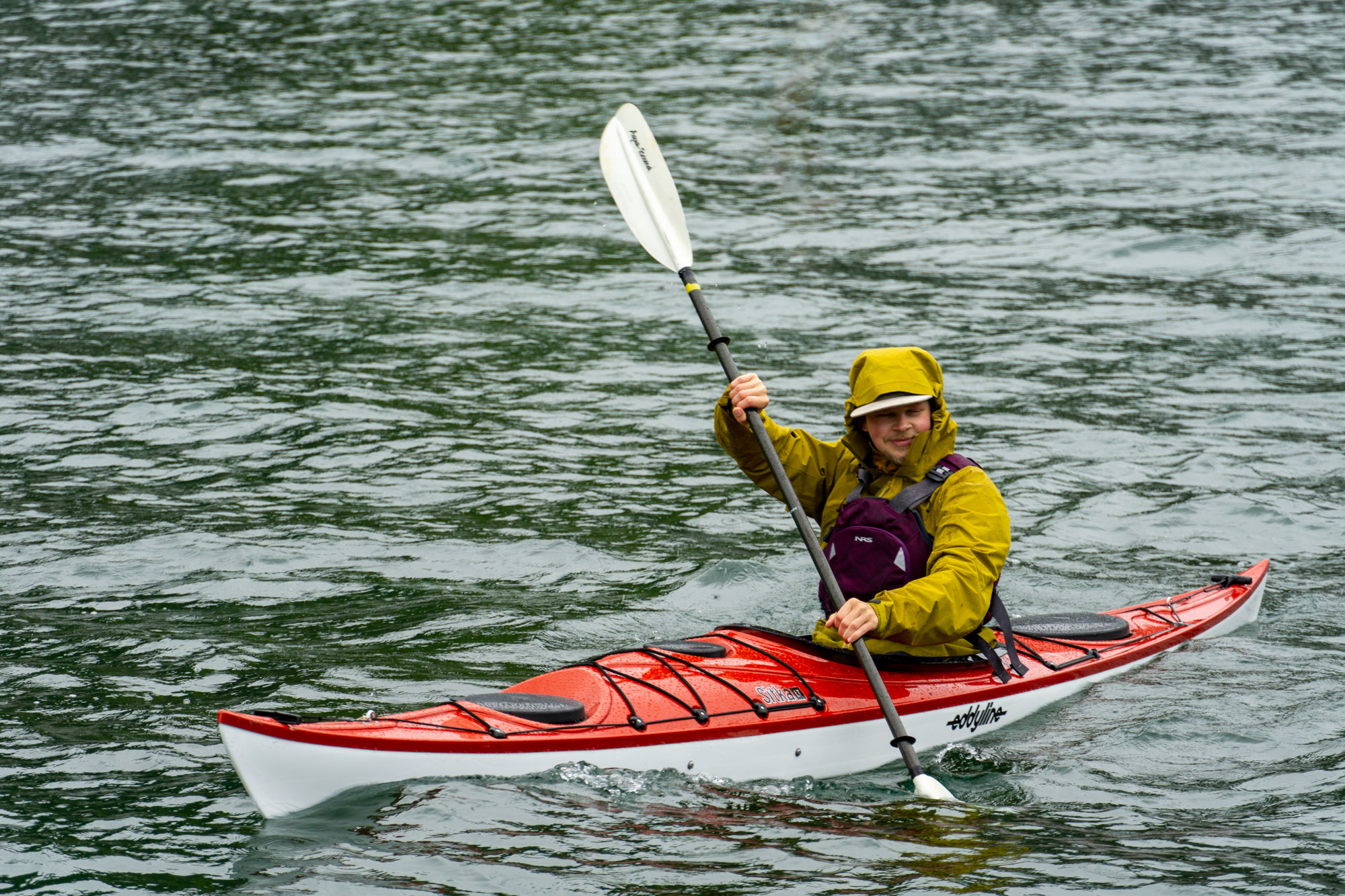
The Best Kayaks of 2025
Kayaks are the original all-terrain vehicles, and we tested the best from Old Town, Wilderness Systems, Eddyline, and more!
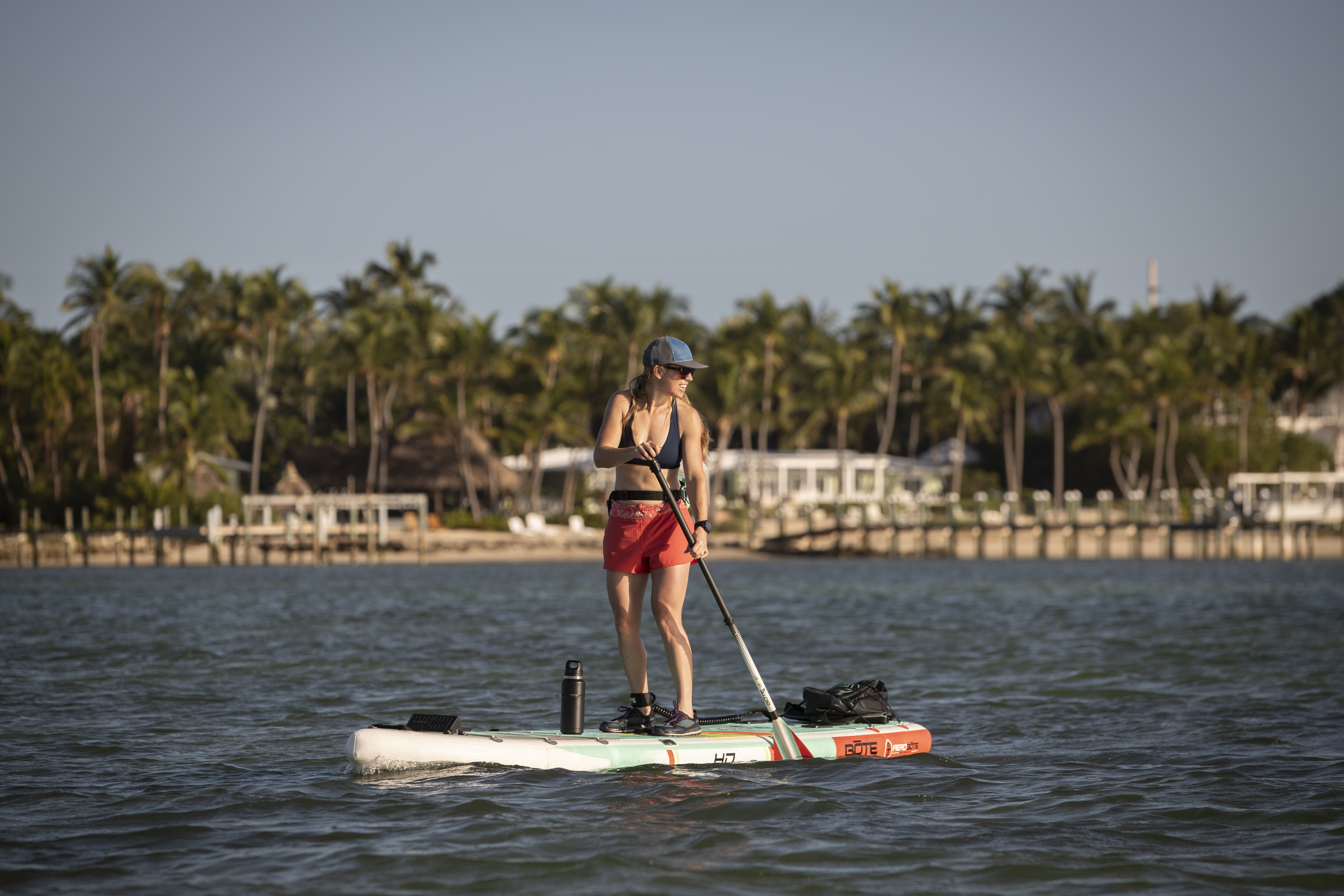
The Best Standup Paddleboards of 2025
Inflatable standup paddleboards (SUPs) are fun watercraft for exploring lakes, rivers, and the ocean. Check out our favorite field-tested SUPs.




